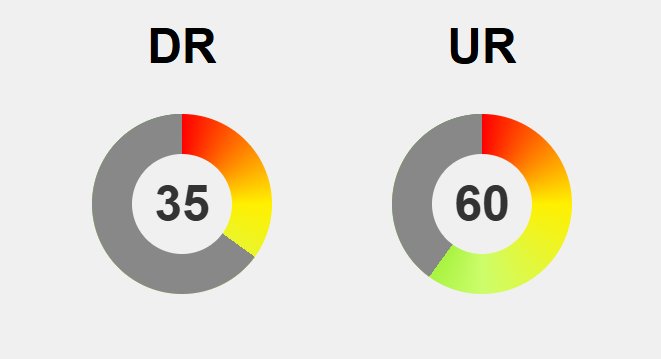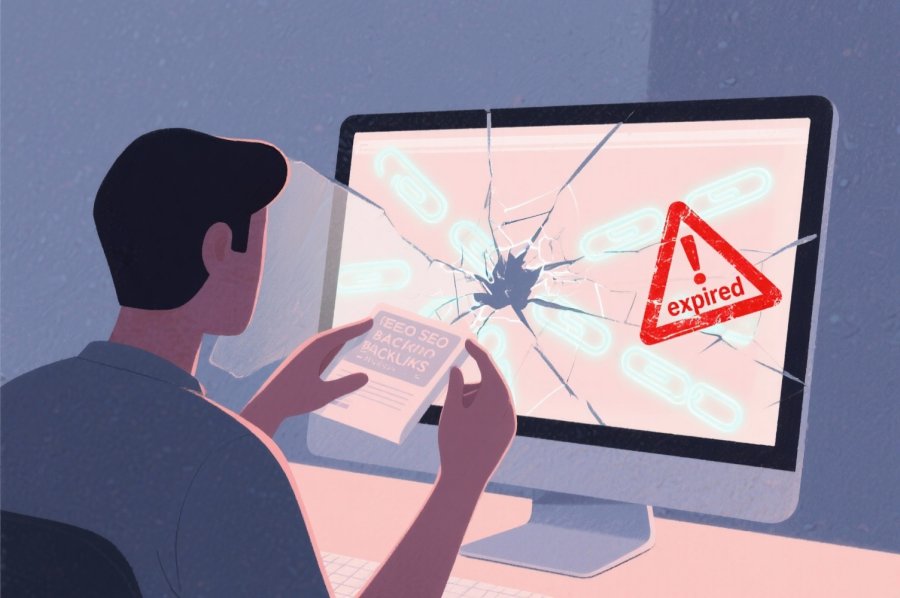Leonardo da Vinci epitomizes the boundless potential of curiosity, seamlessly blending art, science, and innovation in a way that continues to influence our world. His notebooks reveal a mind driven by relentless questioning—dissecting anatomy, dreaming of flight, designing machines—challenging the boundaries of his time. But could his holistic approach still hold secrets that unlock our future? From pioneering anatomical sketches to inspiring modern aerospace and robotics, Leonardo’s interdisciplinary mindset urges us to explore beyond conventional limits. His environment—sparked by Renaissance ideals and patronage—fostered an ecosystem where questions fueled progress. Today, his legacy endures, guiding innovations in medicine, engineering, and space exploration. As technology accelerates, the question remains: can embracing Leonardo’s curiosity and cross-disciplinary thinking propel us toward breakthroughs that redefine human potential? His timeless quest for understanding beckons us to challenge assumptions and push forward into uncharted realms of possibility.
Unlocking the Secrets of Leonardo da Vinci’s Genius
Leonardo da Vinci’s life is a testament to the power of curiosity and the seamless blending of art and science. He was more than just a painter; he was an inventor, engineer, anatomist, and thinker who pushed the boundaries of what was known in his time. His notebooks, filled with sketches and ideas across disciplines, reveal a mind driven by relentless questioning and a desire to understand the world at every level. This multifaceted approach set him apart from many of his peers, who often focused narrowly on a single craft or field.
What makes Leonardo’s legacy so enduring is his ability to connect seemingly unrelated areas of knowledge. His paintings, like the Mona Lisa, revolutionized realism and emotional expression through techniques such as sfumato. But behind these masterpieces lies a scientific curiosity—his detailed anatomical sketches advancing our understanding of the human body centuries before modern medicine. His fascination with flight, hydraulics, natural patterns, and mechanical devices shows a mind that saw no borders between art and science, only opportunities to explore and innovate.
Leonardo’s genius was rooted in his holistic view of learning. He believed that understanding the natural world was essential to progress, approaching each subject with equal passion. Whether dissecting a cadaver or designing a flying machine, he saw these pursuits as parts of a larger quest for knowledge. His curiosity was insatiable, and his notebooks serve as a window into a world where imagination and empirical observation went hand in hand, constantly fueling each other.
His approach was not just about ideas but about a method—question, observe, experiment, and refine. Leonardo believed that true insight came from observing nature closely and translating those observations into art, science, and engineering. This mindset of interconnected thinking continues to inspire innovators today, reminding us that breakthroughs happen at the intersections of disciplines.
Leonardo da Vinci’s influence extends well beyond the Renaissance. His innovative spirit continues to shape fields like medicine, engineering, and even space exploration. His ability to see connections others missed and to think beyond conventional boundaries has made him a timeless symbol of curiosity-driven discovery. His legacy encourages us to challenge assumptions, explore new ideas, and embrace the unending pursuit of understanding—traits as relevant now as they were in his lifetime.
The Renaissance Environment That Sparked Leonardo’s Innovations
Leonardo da Vinci’s groundbreaking ideas didn’t develop in isolation; they were deeply influenced by the vibrant environment of Renaissance Italy, a time when curiosity and innovation flourished. The 15th and 16th centuries saw a revival of classical knowledge, humanism, and artistic exploration, creating a fertile ground for creative and scientific pursuits. Wealthy patrons like the Medici family and Ludovico Sforza played a crucial role in supporting artists, engineers, and scholars, providing the resources necessary for experimentation and discovery. The bustling city-states of Florence, Milan, and Venice became hubs of exchange, where ideas flowed freely between disciplines, fueling breakthroughs that pushed the boundaries of what was considered possible.
Leonardo’s early years also shaped his interdisciplinary approach. Growing up in Vinci, he was driven by an insatiable sense of wonder and keen observation of the natural world. His self-directed studies and curiosity about everything around him laid a strong foundation for his later pursuits. Apprenticed to Andrea del Verrocchio, a renowned artist and craftsman, Leonardo gained exposure to a mix of artistic techniques and mechanical skills. This mentorship blurred the lines between art and science, encouraging him to see each as part of a larger quest for understanding.
As he matured, Leonardo’s scientific curiosity intensified. His anatomical dissections, often conducted in secret, resulted in detailed sketches that advanced human understanding long before modern medicine. His fascination with flight and mechanics led him to sketch early concepts of flying machines and water-lifting devices, driven by a desire to harness natural forces. These experiments underscored a relentless drive to understand and manipulate the natural world—an approach that would define his entire career.
The support of mentors and patrons proved vital. Verrocchio provided technical guidance, while figures like Ludovico Sforza and Lorenzo de’ Medici offered financial backing, granting Leonardo access to tools and resources. This environment, emphasizing classical learning and innovation, nurtured his ability to see connections across seemingly unrelated fields. It was within this atmosphere of intellectual exchange that Leonardo’s ability to innovate at the intersection of art, engineering, and science truly thrived.
The revival of classical texts and philosophies further fueled Leonardo’s curiosity. He drew inspiration from geometry, proportion, and natural patterns, often referencing ancient sources to inform his work. Advances in printing and engineering made knowledge more accessible, encouraging rapid experimentation and dissemination of ideas. This openness to new insights allowed Leonardo to challenge conventional wisdom and pursue ideas that many of his contemporaries deemed impossible.
Throughout his life, Leonardo’s environment continuously fed his insatiable curiosity. The Renaissance’s emphasis on human potential and discovery aligned perfectly with his relentless pursuit of knowledge. His notebooks, filled with sketches, questions, and observations, reveal a mind that thrived on challenge and exploration. The supportive culture of innovation and learning not only nurtured his talents but also allowed his revolutionary ideas to take shape—proof of how circumstances can foster true genius.
In essence, Leonardo da Vinci’s groundbreaking ideas emerged from a confluence of cultural, intellectual, and material support that encouraged cross-disciplinary thinking. His environment exemplified how curiosity, combined with collaboration and resources, can propel individuals to push beyond the limits of their time. His legacy reminds us that fostering such an atmosphere today could unlock the next wave of revolutionary innovations, echoing the spirit of the Renaissance that made such extraordinary progress possible.
How Leonardo’s Legacy Continues to Inspire Today’s World
Today, Leonardo da Vinci’s influence continues to resonate across art, science, and innovation, shaping the way we think about creativity and discovery. Modern scholars and practitioners see him as a pioneer of interdisciplinary thinking, whose methods remain a source of inspiration for breakthroughs that blend artistic intuition with scientific rigor. His anatomical sketches still serve as foundational references in medicine, while his engineering concepts fuel advancements in robotics and aerospace. These contributions are not merely historical; they actively inform current research and technological development.
In the art world, Leonardo’s techniques, such as sfumato and mastery of perspective, are studied and emulated in classrooms and studios worldwide. His artworks, especially the Mona Lisa and The Last Supper, continue to captivate audiences and set standards for realism and emotional depth. The principles behind his artistic mastery—keen observation, patience, and experimentation—have become core values in modern art education. His influence endures because it’s rooted in a universal pursuit of understanding and expression that transcends time.
Scientists and technologists often revisit Leonardo’s notebooks for inspiration, aided by advances in imaging technology. Hidden sketches and notes uncovered through digital analysis reveal fresh insights into his scientific curiosity. These discoveries demonstrate that Leonardo’s mind was not just ahead of his time but remains relevant today, as his ideas about flight, anatomy, and natural systems continue to inspire modern innovation. His sketches of flying machines, for instance, are frequently referenced in the development of drones and helicopters.
Institutions dedicated to Leonardo’s legacy actively promote ongoing research and public engagement. Museums, universities, and research centers host exhibitions and projects that use digital reconstructions and virtual reality to explore his work. These efforts make his ideas more accessible, inspiring new generations to think across disciplines. Through these initiatives, Leonardo’s spirit of curiosity and experimentation remains alive, influencing how we approach complex problems today.
The ongoing scholarly debate about the authenticity of some of his inventions and sketches adds depth to his legacy. With new technology, researchers continuously re-examine his notebooks, sometimes uncovering previously hidden details or questioning traditional attributions. This dynamic reinterpretation underscores that even the greatest genius is open to new insights. It highlights that Leonardo’s true strength lies in his relentless pursuit of understanding, not just in the inventions he left behind.
In education, Leonardo’s holistic approach is increasingly embraced as a model for fostering innovation. Schools and universities now encourage students to explore multiple disciplines, experiment freely, and connect ideas across fields. His example demonstrates that breakthroughs often happen at the intersection of art, science, and engineering—an ethos vital for solving today’s complex challenges. His legacy reminds us that curiosity and cross-disciplinary thinking are essential traits for future progress.
Beyond academia, Leonardo’s story continues to thrive in popular media—through documentaries, books, and exhibitions celebrating his life and ideas. These narratives emphasize not only his achievements but also his mindset: an unquenchable curiosity and a willingness to challenge conventions. This widespread fascination ensures Leonardo’s legacy remains relevant, inspiring new audiences to pursue their own creative and scientific explorations.
Overall, Leonardo da Vinci’s contributions remain a powerful force for ongoing innovation. His fusion of art and science offers a timeless blueprint for future breakthroughs, demonstrating that true progress often arises at the convergence of disciplines. As new tools and technologies emerge, his approach—marked by curiosity, experimentation, and interconnected thinking—continues to shape our understanding of what’s possible. His legacy serves as a reminder that the most profound discoveries are born from relentless exploration and the courage to challenge boundaries.
This ongoing interest in Leonardo’s multifaceted genius is exemplified by various online resources that delve deeper into his scientific and artistic pursuits. For those eager to explore his life and work further, discovering comprehensive insights through dedicated platforms can provide valuable inspiration. To learn more about Leonardo’s enduring influence and explore his innovative ideas, visit Leonardo da Vinci’s Legacy and Contributions.
From Sketches to Reality: Applying Leonardo’s Ideas in Modern Tech
Leonardo da Vinci’s inventive spirit continues to influence modern technology and innovation in profound ways. His sketches of flying machines laid the groundwork for today’s helicopters and drones, inspiring engineers to turn ambitious concepts into real-world devices. With advanced materials and digital modeling, what once seemed purely fantastical is now within reach, demonstrating how Leonardo’s curiosity about flight still fuels aerospace progress. His early ideas pushed the boundaries of possibility, encouraging generations of engineers to explore the skies beyond traditional limits.
In robotics, Leonardo’s automata sketches stand out as some of the earliest visions of machines that mimic human movement. His detailed drawings of mechanical lions and complex gear systems serve as conceptual ancestors to contemporary humanoid robots and automation systems. These ideas foster a mindset of experimentation and continuous improvement, inspiring engineers to develop smarter, more adaptable machines that learn from natural motion and mechanics. Leonardo’s fascination with mechanical life remains relevant as robotics continue to evolve rapidly.
Hydraulics and water management are areas where Leonardo’s influence persists. His designs for water-lifting devices and canal systems laid early foundations for hydraulic engineering. Today, innovations in pumps, irrigation, and flood control still draw inspiration from his understanding of natural forces. His work exemplifies how studying natural systems can lead to sustainable solutions that serve urban and environmental needs alike. Leonardo’s insights remind us that nature’s principles can guide us toward more efficient and eco-friendly engineering.
Leonardo’s anatomical sketches continue to be a cornerstone in medical education. His meticulous observations of muscles, bones, and organs provided a more accurate understanding of the human body long before modern imaging. These drawings laid the groundwork for surgical techniques and medical training that persist today. His emphasis on careful observation and empirical evidence highlights the importance of blending art and science—values that remain central to medical innovation. Leonardo’s detailed approach reminds us that precision and curiosity are keys to progress.
Today, digital tools like 3D printing and virtual reality bring Leonardo’s ideas to life. Researchers reconstruct his flying machines and automata, testing and refining them in simulated environments. These digital recreations turn sketches into functional prototypes, bridging the gap between Renaissance curiosity and cutting-edge technology. Leonardo’s approach to experimentation—rooted in observation and imagination—serves as a blueprint for transforming artistic sketches into tangible innovations that shape the future.
Ultimately, Leonardo’s concepts encourage a mindset of constant exploration and cross-disciplinary thinking. His legacy teaches us that breakthroughs often originate at the intersection of art, science, and engineering. By embracing his curiosity-driven approach, modern innovators can push beyond current limits, unlocking new solutions for complex problems. Leonardo’s ideas remain a powerful catalyst for progress, inspiring us to imagine, experiment, and invent in pursuit of a better tomorrow.
Envisioning the Future: Leonardo’s Approach as a Roadmap for Humanity’s Next Breakthroughs
Looking ahead, Leonardo da Vinci’s integrated approach offers a powerful blueprint for future breakthroughs. As technology advances at an unprecedented pace, the lines between disciplines continue to blur, opening new avenues for innovation. Fields like artificial intelligence, biotechnology, and sustainable engineering are now pushing beyond traditional boundaries, driven by curiosity and cross-disciplinary thinking—traits Leonardo exemplified centuries ago. Many of today’s groundbreaking developments, from personalized medicine to renewable energy, start with simple observations and a willingness to explore connections across fields, much like Leonardo’s sketches of flight and anatomy.
Emerging trends in bioinformatics and regenerative medicine echo Leonardo’s relentless pursuit of understanding natural systems. Researchers increasingly work at the intersection of art and science, blending creativity with technical rigor to solve complex problems. Personalized treatments informed by genomics and AI are transforming healthcare, while biomimicry—drawing inspiration from nature—drives innovations in sustainability. These breakthroughs show that the most transformative progress happens when diverse ideas collide, just as Leonardo saw the world through interconnected lenses.
Space exploration stands as a prime example of how cross-pollination fuels discovery. Developing new propulsion systems or habitats for other planets demands insights from biology, engineering, and materials science—disciplines Leonardo would have found equally fascinating. His emphasis on meticulous observation and experimentation remains vital, encouraging us to explore the unknown with curiosity and humility. Digital tools like simulation and virtual reality now allow us to test ideas rapidly, turning sketches into prototypes and ideas into reality at an accelerating pace.
Creating environments that foster this kind of interdisciplinary thinking will be crucial. Collaborative spaces that bring together scientists, artists, engineers, and thinkers can unlock solutions to pressing issues like climate change and resource scarcity. Leonardo’s example reminds us that innovation flourishes at the intersection of fields, where unconventional ideas challenge the status quo. Cultivating a mindset of curiosity and openness can lead to breakthroughs that redefine what’s possible, inspiring new ways to tackle humanity’s biggest challenges.
Curiosity remains the engine driving these future advances. Encouraging questions, cross-field exploration, and fearless experimentation will be essential. Today’s tools—such as machine learning and advanced modeling—amplify human ingenuity, helping us uncover hidden patterns and insights. These discoveries often spark ideas that Leonardo himself might have envisioned if he had access to today’s technology, demonstrating that progress hinges on a willingness to explore beyond conventional limits.
The greatest future breakthroughs will come from those willing to challenge norms and venture into uncharted territory. Leonardo’s approach shows that simple questions and persistent curiosity can lead to profound discoveries. By maintaining an open mind and embracing collaboration, we can harness the power of interconnected thinking to unlock secrets within nature and the universe. His legacy encourages us to keep pushing boundaries, ensuring that innovation continues to flourish at the edges of what we know—shaping a future as inventive and inspiring as the Renaissance master himself.






